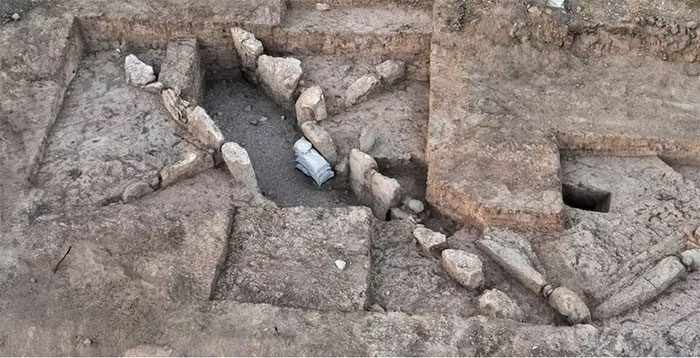Archaeologists in Israel have made a remarkable discovery by uncovering a stunning 5,500-year-old city gate at Tel Erani.
This notable find was announced by the Israel Antiquities Authority, shedding light on the country’s history with the title of the oldest known city gate in Israel.
Unlike typical mudbrick constructions, this gate showcases ancient engineering skills, crafted from enormous stones dating back to the Early Bronze Age.
With an impressive height of approximately 1.5 meters, the gate features a stone passageway that runs through the city walls, flanked by two robust stone watchtowers.

The ancient gate functions as a defensive city wall.
The architectural structure of the gate has attracted the attention of archaeologists, particularly due to the existence of another gate built from conventional mudbrick materials, consistent with the rest of the settlement.
Upon careful analysis of pottery fragments discovered along the gate, archaeologists found that both structures were used simultaneously during that era.
The ancient gate served a dual purpose, acting as both a defensive wall and a symbol representing political, social, and economic power during the period of the unification of Upper and Lower Egypt. This unification marked the end of the Bronze Age.
“This is the first time a large gate dating back to the Early Bronze Age has been discovered. To construct the gate and city walls, stones had to be transported from afar, and mudbricks had to be produced for the walls,” stated Emily Bischoff, the excavation leader representing the Israel Antiquities Authority, in a statement.
The history of Tel Erani spans from the Paleolithic era, but the primary settlement occurred during the Bronze Age.
The presence of Bronze Age pottery provides insights into Tel Erani’s active trade relationships with neighboring regions such as Negev and the Judean Desert.
The excavation was conducted as a rescue effort last month, funded by the Mekorot Water Company. Employees of this company accidentally discovered the artifacts while installing new pipelines.


















































